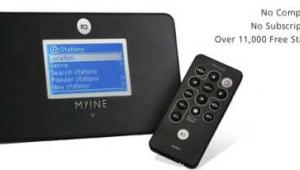Choice Quality Stuff

Starting with video, I attended a private Joe Kane demonstration a year ago where he "proved" VC-1's (Video Codec One) encoding algorithm's superiority to Mpeg2, producing better video and requiring about half the bandwidth to do it. At the time, BluRay was putting out BluRay discs with mpeg2 encoding, so the comparison was justifiably valid, even if the conclusions were short lived. Mpeg4 or AVC ("advanced video codec") is the follow on product for the mpeg2 crowd and it consumes about the same bandwidth as VC-1. Mpeg4 has already been adapted by DirecTv for their new hi-def satellite launches. It's a decision I hope they (or their customers) won't live to regret, since VC-1 requires significantly less computational power for real-time encoding than AVC. Think professional sports. Of course, you know what they say about computational power. If you don't have enough now, just wait.
Tandberg Television has an excellent comparison document ( here ) where they graphically try to compare the three formats, though they wisely sidestep any verdicts other than the superiority of either the AVC or VC-1 codecs over the warhorse mpeg2.
Either VC-1 or AVC can provide excellent video on a high definition disc (VC-1's real-time encoding advantage is moot here). Sony's decision to incorporate mpeg2 as a "viable" codec in their BluRay platform was clearly an expediency to bring their format to market as quickly as possible (and still, it was a year late). I know it left a bad taste in my mouth as Sony's marketing team showed us split screen side by side (same disc, same frame) comparisons of BluRay and standard DVD. I must have gotten there late after the magic mushrooms had been distributed in hopes we would believe their hype over our own eyes. There was a laughable comparison scene from Kill Bill Vol 2 where the BluRay "side" didn't even look as good a standard DVD upconverted to 720p on my Brave D2, while the DVD "side" looked like a decent looking laserdisc.
Decent. Not great.
Recent BluRay discs, however, incorporate AVC and look, from what I've read, to be every bit as good as VC-1. Case in point, Apocalypto, which Tom gave a 9.5 out of 10 (and he's no Blushing Abdul in the scoring department).
What about audio? Here, you would think BluRay's inherent capacity advantage would mean you'd be seeing more Dolby TrueHD releases, but so far, HD-DVD has been the more aggressive in pursuing better sound. Case in point – again – Paramounts release of Flags of Our Fathers (see Shanes comments). Available in both BluRay and HD-DVD, it's the later that gets the best of the old school Dolby Digital 5.1 soundtracks, while BluRay is saddled with a 640 kbps track. Not sure why both didn't see Dolby TrueHD, considering they're new releases and not catalog titles.
Good chefs know you should always buy the freshest ingredients.
Meanwhile, Bill Hunt over at his Digital Bit's web site went apoplectic over a half dozen (agreeably, quite inaccurate) sentences on Ain't It Cool's web site regarding Cool's endorsement of HD-DVD. Hunt and his staff have gone 100% denominationally BluRay. They make some points that are valid on a tactical level, but strategically, the game if far from over. And in the end, who says good affordable universal players won't provide the ultimate solution.
In the meantime. Don't count out HD-DVD discs and players out just yet. To paraphrase a line from The Graduate, I got one word for you.
"Chinese."
- Log in or register to post comments





























































